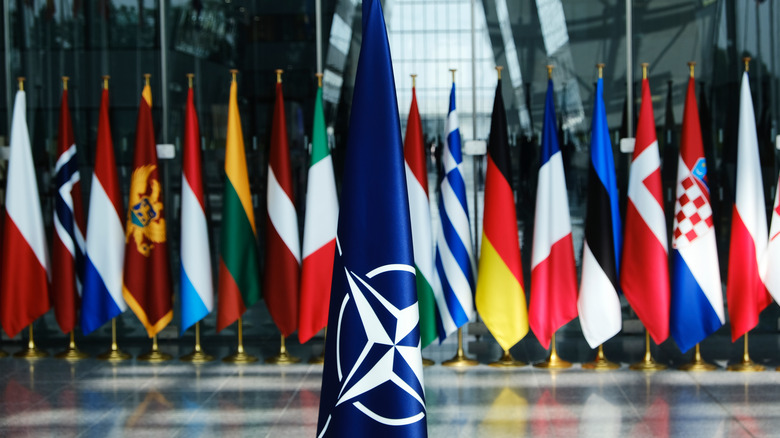Here's What We Know About NATO's Secret Armies
The occupation of most of Europe by Nazi Germany led to extensive partisan, intelligence, and counterintelligence tactics being developed throughout the continent. These strategies for defeating an invading force did not melt away with the Axis defeat, as those under de facto Soviet occupation felt they had simply traded one authoritarian regime for another (via The National WWII Museum). In the final days of World War II, many, including British Prime Minister Winston Churchill and U.S. General George Patton, wished to intervene militarily and end Soviet expansion (via GlobalSecurity.org).
While their ambitions never materialized, it remained a possibility for many that conflict would come and necessitate a revival of their wartime mindset. A network of paramilitary and intelligence agencies was established among most of NATO's members in some form during the early Cold War. The most developed of these secret armies took the shape of Italy's Operation Gladio which, unlike its foreign counterparts, may have been put to exceptionally destructive use.
Italy's 'Years of Lead' may have been amplified by the CIA
Operation Gladio was the Italian government's allegedly CIA-backed plan for, at least initially, a military occupation of the country. Throughout the peninsula, arms caches were concealed while units of select military personnel received extensive training in partisan strategy (via The Washington Post). In the 1960s and '70s, Italy faced immense turmoil with the rise in popularity of the Communist Party. In the hopes of forwarding their respective goals, far-right groups carried out bombings that killed hundreds. Meanwhile, far-left groups kidnapped and assassinated journalists and politicians, including Prime Minister Aldo Moro (pictured above during his captivity), who had in fact been trying to include the Communist Party in a coalition government (via Understanding Italy).
While links between the far-right's terrorism during the "Years of Lead" and Operation Gladio/CIA are technically still in question, its anti-Soviet directive is for many a clear correlation. Other evidence includes the disappearance of weapons from Gladio arms caches, while an Italian report states that the CIA knew in advance and possibly even organized many of the bombings (via The Guardian). Given the CIA's extensive history of moles and potentially extralegal initiatives, these theories are hardly unreasonable to assume.

